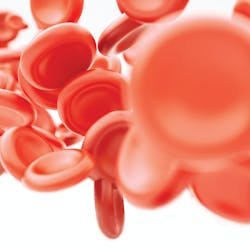As I have said to so many amazing dental hygienists over the years, pain is a powerful motivator and demotivator for patients to seek treatment. As such, proper management of dental pain is essential for ensuring our patients’ therapeutic success. However, what I have learned about pain from my direct interaction with patients is simple and priceless: the more pain a patient experiences in the dental chair, the more pain they will experience when they are out of the chair (even if they really don’t). The subjective, emotional response to dental pain, which often exceeds a patient’s tolerance for pain, should not be underestimated. While we tend to think of pain management as a posttherapeutic responsibility, it actually begins with effective perioperative delivery of local anesthesia.
How do anesthetics work?
Local anesthetic agents are drugs commonly administered in dental hygiene procedures to produce reversible loss of the sensation of pain, without affecting the patient’s consciousness.1 This is accomplished by blocking nerve conduction in the area where the local anesthetic is applied.
The choice of local anesthetic agent to be administered must be made to specifically accommodate each individual patient’s unique medical needs and considerations.2 The three local anesthetic agents dental hygienists most commonly administer have advantages and disadvantages that make them suitable or unsuitable in certain clinical situations.
Lidocaine
Lidocaine has long been considered the gold standard of dental local anesthetic agents, against which all other agents are compared.3 Lidocaine is one of the most used dental local anesthetic agents, and its safety and efficacy have been well established through extensive research and clinical use. It’s no wonder that many dental hygienists would agree that lidocaine was the first local anesthetic agent they administered in their formal training.
Lidocaine typically has a fast onset of action but a moderate duration of effect, which makes it suitable for dental procedures of varying lengths. Lidocaine is generally considered effective in providing anesthesia for a range of dental procedures, from simple restorative work to more complex interventions.3
Lidocaine considerations: As with every local anesthetic agent used in dental hygiene, though, there are some disadvantages to consider with lidocaine. Although quite rare, lidocaine may cause allergic reactions in some individuals.4 Dental hygienists should inquire about each patient’s medical history and any known allergies before administering lidocaine.
If lidocaine is inadvertently administered in excessive amounts or enters the bloodstream too quickly, it can lead to central nervous system and cardiovascular toxicity, including seizures or cardiac disturbances.5 Careful calculation of dosages and administration techniques are crucial to avoid such complications.
Lidocaine is available in dental local anesthetic cartridges combined with epinephrine, which prolongs its duration of action and reduces systemic absorption. However, in certain patients with cardiovascular issues, patients who are pregnant, and patients who have an allergy to sulfites, caution is needed as epinephrine may lead to potential complications.6
Articaine
While still relatively new to the US market, articaine is one of the most widely administered local anesthetic agents in dental hygiene procedures. Due its enhanced lipid solubility, articaine is well known for its combination of clinical advantages: rapid onset of action, long duration of action, and high success rate in achieving anesthesia via both infiltration and certain nerve block techniques.7
Unlike 2% lidocaine, articaine is available as a 4% anesthetic solution. This higher potency allows for more anesthetic molecules to be delivered in fewer cartridges. Although technically an amide-type local anesthetic agent, articaine is extensively metabolized by enzymes in the plasma, which may make it desirable for patients with certain types of liver dysfunction.7
Articaine considerations: As with lidocaine, there are some disadvantages to consider with the use of articaine. Although less common than with some other local anesthetics, articaine may still cause allergic reactions in some individuals.8 Articaine is not contraindicated in patients with sulfa allergies; there is no cross-allergenicity between the sulfur-bearing thiophene ring in articaine and sulfonamides.9
Dental hygienists should assess patients for allergies and use caution when there is a history of medication sensitivity. While articaine generally has a good safety profile, improper administration or dosage calculation can lead to systemic toxicity, with potential effects on the central nervous system and cardiovascular system.5
Articaine is available in dental local anesthetic cartridges combined with epinephrine. While this is generally advantageous, caution is needed in patients for whom the use of epinephrine may lead to potential complications.6 As a 4% anesthetic, articaine, in some cases, may result in prolonged or permanent paresthesia when administered in mandibular nerve block procedures, although this risk may also be driven by other factors.10
Mepivacaine
Mepivacaine is also a widely used local anesthetic agent in dental hygiene procedures. What makes mepivacaine so popular perhaps is what makes it so different from lidocaine and articaine. Unlike 2% lidocaine and 4% articaine, mepivacaine is available as a somewhat intermediate 3% anesthetic solution.11 Mepivacaine generally has a rapid onset of action and a somewhat short duration of action, making it suitable for various dental procedures of moderate length.12
Mepivacaine is available in formulations without epinephrine, which increases patient comfort since these formulations are less acidic than other epinephrine-containing local anesthetic formulations.13 In addition, as an epinephrine-free formulation, mepivacaine is a suitable option for patients for whom the use of epinephrine may lead to potential complications.6
Mepivacaine considerations: As with lidocaine and articaine, there are some disadvantages to consider with the use of mepivacaine. While allergic reactions are rare, mepivacaine can cause sensitivity in some individuals.14 Dental hygienists should assess patients for allergies and use caution when there is a history of sensitivity.
Since mepivacaine has a shorter duration of action compared to other local anesthetic agents, it may not be the first choice for longer and more complex procedures that require extended pain control. In addition, due to its shorter duration of action, mepivacaine may require larger doses to achieve the desired level of anesthesia compared to other local anesthetics.6 Ultimately, coupled with mepivacaine’s unique pharmacokinetics, this may lead to systemic toxicity with potential effects on the central nervous system and cardiovascular system, especially in children.15
Choose anesthetics carefully
Local anesthetic agents are invaluable to the dental hygiene profession since they allow for the reversible and temporary loss of the sensation of pain during procedures without affecting the patient’s consciousness. Local anesthetics are also quite versatile in terms of administration techniques.
However, it is essential for dental hygienists to carefully consider each patient’s medical history and assess patient-specific factors—i.e., individual variations in response, altered metabolism, known allergies, and other potential contraindications—when selecting and administering the most appropriate local anesthetic agent. Additionally, proper techniques and dosage calculation are essential to minimize the risk of adverse effects, systemic toxicity, and other complications such as hematoma, nerve damage, or infection at the
injection site.
Editor's note: This article appeared in the March 2024 print edition of RDH magazine. Dental hygienists in North America are eligible for a complimentary print subscription. Sign up here.
References
- Bahl R. Local anesthesia in dentistry. Anesth Prog. 2004;51(4):138-142.
- Renton T. Optimal local anaesthesia for dentistry. In: Renton T, ed. Optimal Pain Management for the Dental Team (BDJ Clinician’s Guides). Springer; 2022:chap 9.
- Taneja S, Singh A, Jain A. Anesthetic effectiveness of articaine and lidocaine in pediatric patients during dental procedures: a systematic review and meta-analysis. Pediatr Dent. 2020;42(4):273-281.
- Janas-Naze A, Osica P. The incidence of lidocaine allergy in dentists: an evaluation of 100 general dental practitioners. Int J Occup Med Environ Health. 2019;32(3):333-339. doi:10.13075/ijomeh.1896.01235
- Purcell-Jones G, Reynolds F. Adverse reactions to local anesthetics. In: Dalens BJ, ed. Pediatric Regional Anesthesia. Routledge; 2019:chap 3.
- Ogle OE, Mahjoubi G. Local anesthesia: agents, techniques, and complications. Dent Clin North Am. 2012;56(1):133-148. doi:10.1016/j.cden.2011.08.003
- Ali SG, Mulay S. Articaine vs lidocaine: a review. IOSR-JDMS. 2014;13(9):40-44.
- El-Qutob D, Morales C, Peláez A. Allergic reaction caused by articaine. Allergol Immunopathol (Madr). 2005;33(2):115-116. doi:10.1157/13072924
- Maruthingal S, Mohan D, Maroli RK, Alahmari A, Alqahtani A, Alsadoon M. A comparative evaluation of 4% articaine and 2% lidocaine in mandibular buccal infiltration anesthesia: a clinical study. J Int Soc Prev Community Dent. 2015;5(6):463-469. doi:10.4103/2231-0762.167717
- Aquilanti L, Mascitti M, Togni L, Contaldo M, Rappelli G, Santarelli A. A systematic review on nerve-related adverse effects following mandibular nerve block anesthesia. Int J Environ Res Public Health. 2022;19(3):1627. doi:10.3390/ijerph19031627
- Srisurang S, Narit L, Prisana P. Clinical efficacy of lidocaine, mepivacaine, and articaine for local infiltration. J Investig Clin Dent. 2011;2(1):23-28. doi:10.1111/j.2041-1626.2010.00035.x
- Hawkins JM, Moore PA. Local anesthesia: advances in agents and techniques. Dent Clin North Am. 2002;46(4):719-732. doi:10.1016/s0011-8532(02)00020-4
- Lottinger C. Local anesthetics in dentistry. In: Ferneini EM, Goupil MT, eds. Evidence-Based Oral Surgery: A Clinical Guide for the General Dental Practitioner. Springer; 2019:chap 7.
- Sharma V, Harper NJN, Garcez T, Arkwright PD. Allergic reaction to mepivacaine in a child. Br J Anaesth. 2013;110(6):1059-1060. doi:10.1093/bja/aet147
- Brockmann WG. Mepivacaine: a closer look at its properties and current utility. Gen Dent. 2014;62(6):70-75.
With more than 30 years’ experience as a board-certified pharmacist, clinical educator, professional speaker, and published author, Tom Viola, RPh, CCP, has earned the reputation as the go-to specialist for making pharmacology practical and useful for dental teams. He is the founder of Pharmacology Declassified and is a member of the faculty of more than 10 dental professional degree programs. Tom has contributed to several professional journals and pharmacology textbooks, and currently serves as a consultant to the American Dental Association’s Council on Scientific Affairs.








